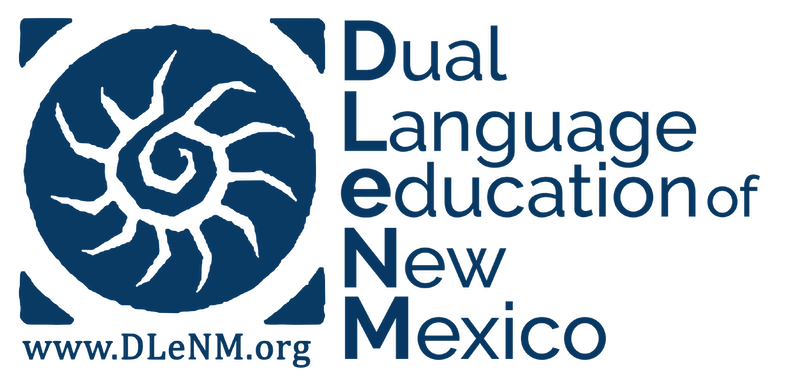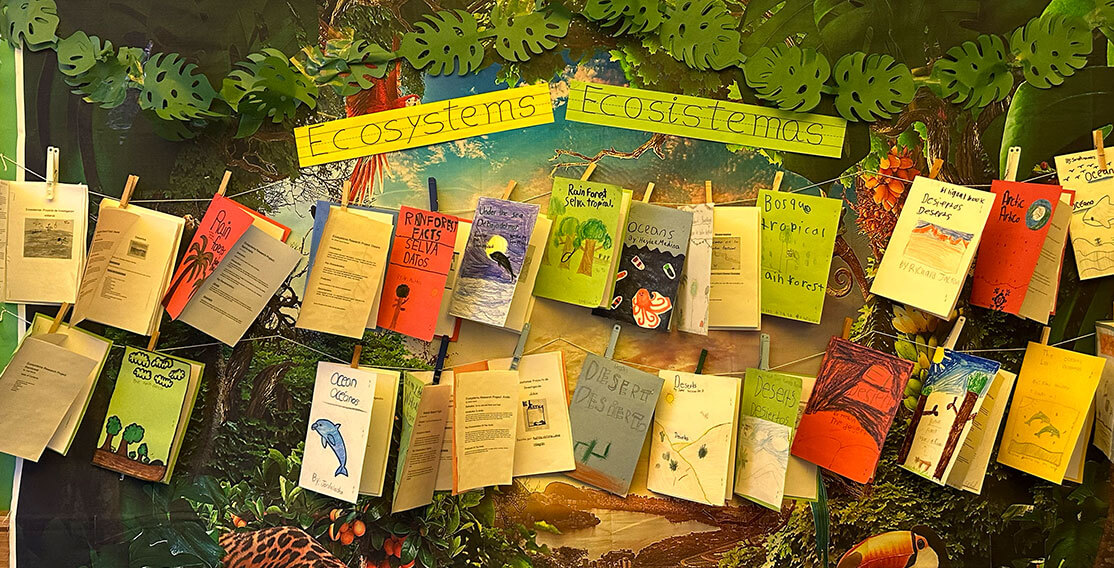
Dual Language Bilingual Education Program Development (DLBE Program Development)
Dual Language Bilingual Education Program Development (DLBE Program Development)
About DLBE Program Development
Thoughtful DLBE program design requires consistent, intentional, ongoing reflection on equity, research, instructional best practices, and student outcomes.
Our program development offerings are designed to build a strong foundation for your program while integrating practices that will foster sustainability and capacity-building at every level of growth. Creating a thriving dual language program entails continuous and deliberate reflection on equity, research, best practices, implementation, and evaluation, and aligns with the Guiding Principles of Dual Language Education, 2018.


About DLBE Program Development
Thoughtful DLBE program design requires consistent, intentional, ongoing reflection on equity, research, instructional best practices, and student outcomes.
Our program development offerings are designed to build a strong foundation for your program while integrating practices that will foster sustainability and capacity-building at every level of growth. Creating a thriving dual language program entails continuous and deliberate reflection on equity, research, best practices, implementation, and evaluation, and aligns with the Guiding Principles of Dual Language Education, 2018.
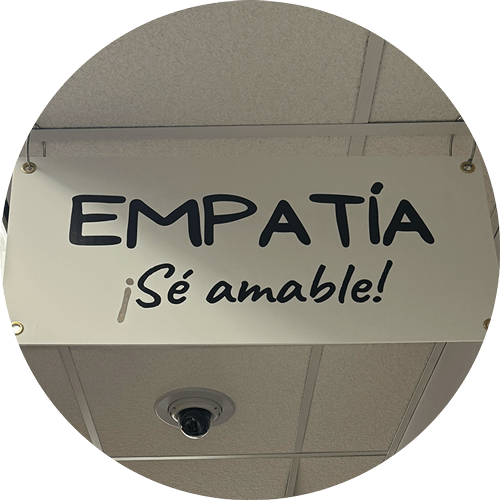
What We Offer
Explore our step-by-step process.
In consideration of school’s and district’s various entry points for DLBE programming, we have outlined the following steps for effective program design:
Virtual or In-Person
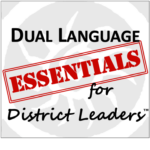 This facilitated training provides district and school-level leadership with a deeper understanding of the foundational components of Dual Language Bilingual Education (DLBE), as referenced in the Guiding Principles for Dual Language Education, 2018. This three-hour offering will guide district leaders in establishing systems to support DLBE program implementation.
This facilitated training provides district and school-level leadership with a deeper understanding of the foundational components of Dual Language Bilingual Education (DLBE), as referenced in the Guiding Principles for Dual Language Education, 2018. This three-hour offering will guide district leaders in establishing systems to support DLBE program implementation.
This session will confirm and develop shared knowledge of primary and/or secondary DLBE program needs, including:
- The “Why” of DLBE - Educational Equity
- 3 Goals of DLBE
- Non-negotiables of DLBE
- DLBE Research
 As we collectively work towards equitable and sustainable DLBE programs and a K-12 pathway we plan for Site Visits.
As we collectively work towards equitable and sustainable DLBE programs and a K-12 pathway we plan for Site Visits.
Site Visits are intended to provide a real-time profile of a school’s program implementation. Information is gathered from various stakeholder interviews and classroom observations. This analysis identifies program strengths and recommendations relative to program planning, implementation, and alignment.
Objectives
Site Visits will establish a baseline to explore how:
- linguistic equity and vitality are supported,
- family-school-community partnerships are working, and
- collective knowledge and capacity building are being developed to support the school community with key decision-making related to program implementation.
Information gathered during the Site Visit will be used to customize the retreat activities to support implementation within the school’s context.
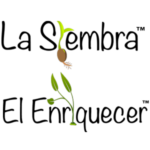 As we collectively work towards equitable and sustainable DLBE programs, a program planning retreat is designed based on the information gathered during the Site Visits (Step 2) and in alignment with the Guiding Principles for Dual Language Education, 2018.
As we collectively work towards equitable and sustainable DLBE programs, a program planning retreat is designed based on the information gathered during the Site Visits (Step 2) and in alignment with the Guiding Principles for Dual Language Education, 2018.
La Siembra™ - Planting the seeds for effective DLBE implementation.
La Siembra™ is a retreat designed to facilitate the effective planning, preparation, and design of new or developing DLBE programs.
El Enriquecer™ - Nurturing the continued growth of quality DLBE programs.
El Enriquecer™ is a retreat designed to give school leadership teams an opportunity to strengthen and/or expand their existing/veteran DLBE program.
Facilitators guide school leadership teams through the process of program assessment and action planning. Participants will study, reflect, and modify a number of concrete examples and tools for their immediate use.
Retreats consist of:
- Two days of intensive training and planning with school leadership teams,
- A focus on creating program sustainability through capacity building,
- Identification and strengthening of essential components that ensure effective implementation and instruction,
- Program assessment and action planning utilizing the Guiding Principles for Dual Language Education,
- Training and facilitation by experienced dual language administrators/teachers.
School leadership participants consist of 6-10 members who are charged with directly supporting the dual language bilingual education program, including school administrators, support specialists, and lead teachers from each grade level implementing DLBE. We also encourage participation by community and parent leaders and district leadership personnel.
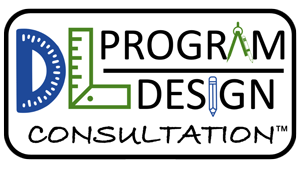 We offer various options for coaching sessions that include an individual or small-group dynamic. These sessions, facilitated by our dual language experts, are designed to follow up on action plans that were developed during program planning retreats (Step 3). Our team can also serve as a timely thought partner to plan for equitable education decisions being made at the district and school levels regarding DLBE programming. Possible topics for coaching sessions include, but are not limited to:
We offer various options for coaching sessions that include an individual or small-group dynamic. These sessions, facilitated by our dual language experts, are designed to follow up on action plans that were developed during program planning retreats (Step 3). Our team can also serve as a timely thought partner to plan for equitable education decisions being made at the district and school levels regarding DLBE programming. Possible topics for coaching sessions include, but are not limited to:
- Revisit and reflect on action plans created during retreats,
- Language allocation planning,
- Curriculum adaptation for DLBE,
- Planning for biliteracy considerations and translanguaging,
- Family and community involvement,
- Planning for district dual language committee meetings,
- Going deeper with DLBE research, and
- Providing relevant and up-to-date resources.
Customized Follow-Up is designed to meet site-specific DLBE professional development needs. PD offerings can be flexible in time (e.g., three hours or full-day sessions), groupings (e.g., whole school, grade-level PLCs), and format (virtual or in-person).
DLeNM offers various topics for Customized Follow-Up PD sessions. They may include but are not limited to:
- Language Allocation Planning
- Curriculum Adaptation for DLBE Programming
- Science of Reading
- DLeNM’s 4 Instructional Spaces
- Elevating the Third Goal: Sociocultural Competence
- DL 102: Going Deeper with Program Implementation
- Translanguaging
- Biliteracy Considerations

What We Offer
Explore our step-by-step process.
In consideration of school’s and district’s various entry points for DLBE programming, we have outlined the following steps for effective program design:
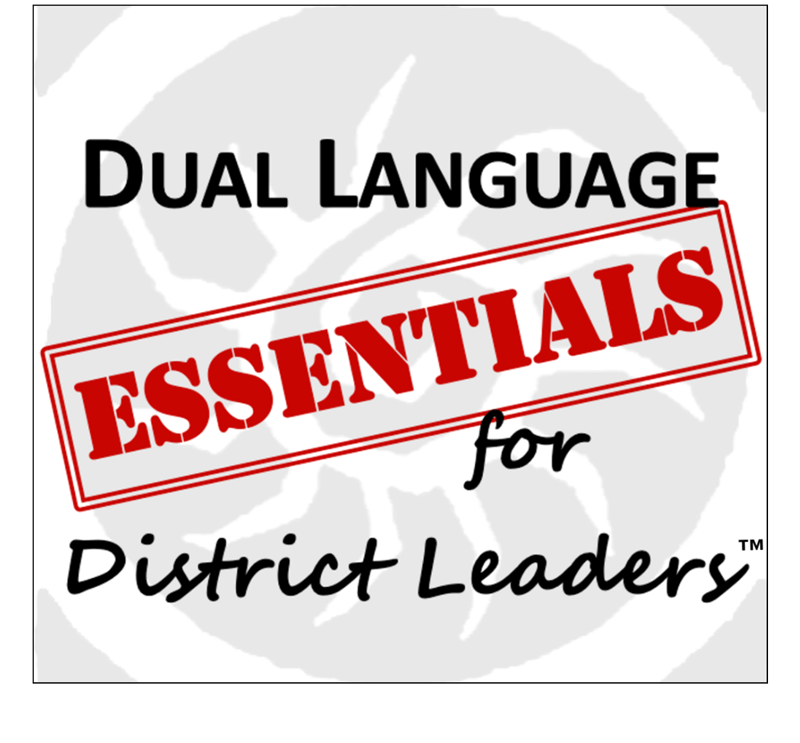
Virtual or In-Person
This facilitated training provides district and school-level leadership with a deeper understanding of the foundational components of Dual Language Bilingual Education (DLBE), as referenced in the Guiding Principles for Dual Language Education, 2018. This three-hour offering will guide district leaders in establishing systems to support DLBE program implementation.
This session will confirm and develop shared knowledge of primary and/or secondary DLBE program needs, including:
- The “Why” of DLBE - Educational Equity
- 3 Goals of DLBE
- Non-negotiables of DLBE
- DLBE Research

As we collectively work towards equitable and sustainable DLBE programs and a K-12 pathway we plan for Site Visits.
Site Visits are intended to provide a real-time profile of a school’s program implementation. Information is gathered from various stakeholder interviews and classroom observations. This analysis identifies program strengths and recommendations relative to program planning, implementation, and alignment.
Objectives
Site Visits will establish a baseline to explore how:
- linguistic equity and vitality are supported,
- family-school-community partnerships are working, and
- collective knowledge and capacity building are being developed to support the school community with key decision-making related to program implementation.
Information gathered during the Site Visit will be used to customize the retreat activities to support implementation within the school’s context.
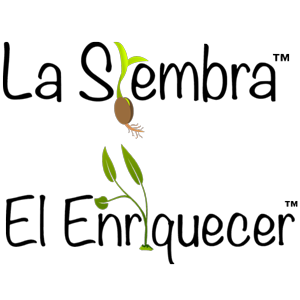
As we collectively work towards equitable and sustainable DLBE programs, a program planning retreat is designed based on the information gathered during the Site Visits (Step 2) and in alignment with the Guiding Principles for Dual Language Education, 2018.
La Siembra™ - Planting the seeds for effective DLBE implementation.
La Siembra™ is a retreat designed to facilitate the effective planning, preparation, and design of new or developing DLBE programs.
El Enriquecer™ - Nurturing the continued growth of quality DLBE programs.
El Enriquecer™ is a retreat designed to give school leadership teams an opportunity to strengthen and/or expand their existing/veteran DLBE program.
Facilitators guide school leadership teams through the process of program assessment and action planning. Participants will study, reflect, and modify a number of concrete examples and tools for their immediate use.
Retreats consist of:
- Two days of intensive training and planning with school leadership teams,
- A focus on creating program sustainability through capacity building,
- Identification and strengthening of essential components that ensure effective implementation and instruction,
- Program assessment and action planning utilizing the Guiding Principles for Dual Language Education,
- Training and facilitation by experienced dual language administrators/teachers.
School leadership participants consist of 6-10 members who are charged with directly supporting the dual language bilingual education program, including school administrators, support specialists, and lead teachers from each grade level implementing DLBE. We also encourage participation by community and parent leaders and district leadership personnel.

We offer various options for coaching sessions that include an individual or small-group dynamic. These sessions, facilitated by our dual language experts, are designed to follow up on action plans that were developed during program planning retreats (Step 3). Our team can also serve as a timely thought partner to plan for equitable education decisions being made at the district and school levels regarding DLBE programming. Possible topics for coaching sessions include, but are not limited to:
- Revisit and reflect on action plans created during retreats,
- Language allocation planning,
- Curriculum adaptation for DLBE,
- Planning for biliteracy considerations and translanguaging,
- Family and community involvement,
- Planning for district dual language committee meetings,
- Going deeper with DLBE research, and
- Providing relevant and up-to-date resources.
Customized Follow-Up is designed to meet site-specific DLBE professional development needs. PD offerings can be flexible in time (e.g., three hours or full-day sessions), groupings (e.g., whole school, grade-level PLCs), and format (virtual or in-person).
DLeNM offers various topics for Customized Follow-Up PD sessions. They may include but are not limited to:
- Language Allocation Planning
- Curriculum Adaptation for DLBE Programming
- Science of Reading
- DLeNM’s 4 Instructional Spaces
- Elevating the Third Goal: Sociocultural Competence
- DL 102: Going Deeper with Program Implementation
- Translanguaging
- Biliteracy Considerations
For more information please contact:
José Azul Cortés
Director of Heritage Languages
azul@dlenm.org
505-243-0648
